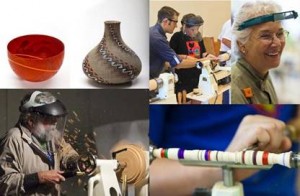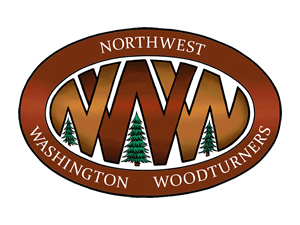[note]The following is from the latest newsletter of the American Association of Woodturners. There is an amazing amount of activity going on in the AAW to advance the state of our craft, so if you are not already a member please consider joining.[/note]
 Our 25th Anniversary Symposium was a great success and we want to share some of the highlights with you. We had over 1,700 registered attendees, 83 youth program participants, our largest Trade Show, and a rich Instant Gallery.
Our 25th Anniversary Symposium was a great success and we want to share some of the highlights with you. We had over 1,700 registered attendees, 83 youth program participants, our largest Trade Show, and a rich Instant Gallery.
In addition to photos and highlights from the sypmposium in this newsletter, take a look at the calls for entry, Board of Directors voting information, and upcoming regional symposia.
We hope that you have had a great summer!
Photos from the symposium can be found on our Facebook page or at aawoodturners.blogspot.com
Remember to Vote for the AAW Board of Directors
The Nominating Committee has presented six candidates to the AAW Membership for their consideration. Find out more information about each candidate here.
Voting began August 1, 2011. Your vote must be cast electronically or postmarked no later than October 21, 2011.
You have two ways to vote:
1) Electronically: Visit woodturner.org/boardvote and log-in using your member number and password
2) Paper ballot: Complete the paper ballot, which is included in your poly-bagged August issue of American Woodturner, and mail using the enclosed self-addressed envelope.
All voting is handled by an audit firm; therefore the AAW office will not be able to send replacement ballots. If your ballot is misplaced, you will need to cast your vote electronically. We encourage you to participate in the voting process and hope that you are able to take the time to help make this election turnout significant.
Book Signing Event at Special Interest Night
The Special Interest Night book signing event was an even bigger success than we could have imagined. Attendees patiently waited in a line that traveled into the hallway to have over 50 artists and authors sign their books. Three of the woodturning community’s latest books were available that night; Conversations with Wood: Selections from the Waterbury Collection; The Cutting Edge: Contemporary Wood Art and the Lipton Collection; and Woodturning Today: A Dramatic Evolution. It was a great chance for people to browse the great new woodturning books, and meet the top artists and collectors.
Woodturning Today: A Dramatic Evolution
The symposium gave us a chance to showcase AAW’s 25th Anniversary book, Woodturning Today: A Dramatic Evolution. The response from members and the woodturning community was great!
This 256-page book is filled with color photographs of beautiful turned art, personal narratives, and a detailed walk-through of the past twenty-five years of AAW. Continue to tell the story of the American Association of Woodturners, and help new turners explore the history of this amazing craft.
We are happy to announce that pre-orders are arriving on the doorsteps of people around the world. Thank you all for your patience. We hope you enjoy your commemorative book!
If you have not yet ordered your copy, please page through this 18 page excerpt from Woodturning Today.
Object Conservation
During the 2011 Symposium, AAW and the Collectors of Wood Art co-sponsored a discussion on object conservation. The discussion was led by conservators, Laura Kubick and Hugh Schockey, from the Lunder Conservation Center at the Smithsonian American Art Museum in Washington DC.
The Smithsonian has generously shared their hand-outs from the panel discussion. Two articles are available to view online: Selecting Materials for Wood Art and Preservation of Wooden Objects.
Unseen Pleasures of Turning
Tib Shaw, Curator of the AAW’s Gallery of Wood Art, and Malcolm Zander worked with Vision Loss Resources in Minnesota to organize an event at the symposium for a small group of blind participants to learn more about woodturning.
Follow this link for details and photos from the event.
Thank You 2011 Symposium Volunteers!
On behalf of the entire AAW board and staff, we would like to thank all of the volunteers that worked so hard during the symposium. The 25th Anniversary International Symposium was a milestone in AAW history, and because of the strong support from volunteers, the symposium continues to be a great success! Thank you for all of your dedication and hard work.
Please take a moment to look at the list of 2011 symposium volunteers.
 Northwest Washington Woodturners is pleased to announce A DAY WITH DOUGLAS FISHER on October 22 in Anacortes, WA. We invite you to join us and share in this informative day. Douglas will be discussing and demonstrating the details of how he creates his unique turned sculptures. Registration is only $35 and includes snacks, beverages and lunch.
Northwest Washington Woodturners is pleased to announce A DAY WITH DOUGLAS FISHER on October 22 in Anacortes, WA. We invite you to join us and share in this informative day. Douglas will be discussing and demonstrating the details of how he creates his unique turned sculptures. Registration is only $35 and includes snacks, beverages and lunch.


